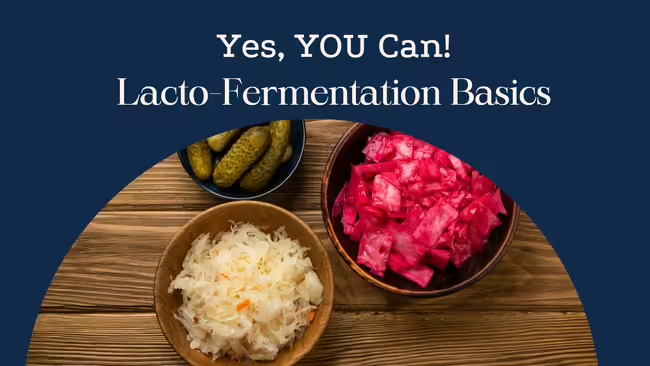
Fermentation, like drying, is one of the oldest methods of preserving food for later use. It is also used in creating other foods, like cheese, yogurt, alcohol, and sourdough bread. Fermentation is a natural process in which microorganisms, such as bacteria or yeast convert carbohydrates into alcohol or organic acids under ideal conditions.
There are several different methods used in fermentation, and they can be classified into four types, based on the end product formed. They include lactic acid fermentation, alcohol fermentation, acetic acid fermentation, and butyric acid fermentation. Lactic acid fermentation, or lacto-fermentation, uses lactic-acid-producing bacteria and some yeasts to break down the sugars in food to form lactic acid and sometimes alcohol or carbon dioxide. Fermenting vegetables in this manner can extend the shelf life and break down some vegetables' components, making them easier to digest and absorb.
University of Illinois will offer a workshop, Yes, You Can: Preserve It Safely: The Art of Fermenting Vegetables, Thursday, August 24, from 6 to 8:00 p.m., at the Stephenson County University of Illinois Extension office. The office is located at 2998 W Pearl City Road in Freeport. In this educational session, you will learn about the importance of salt, water, temperature, the types of vessels used, and basic food-safety practices for fermenting vegetables. Better yet, you will go home with the knowledge to get started!